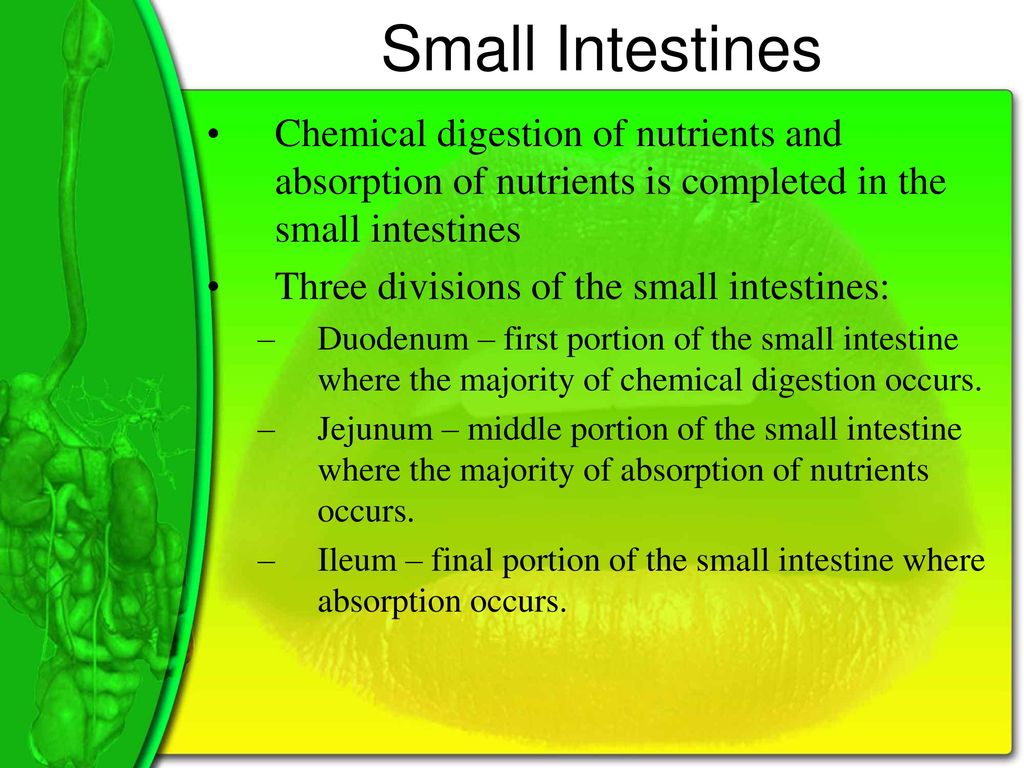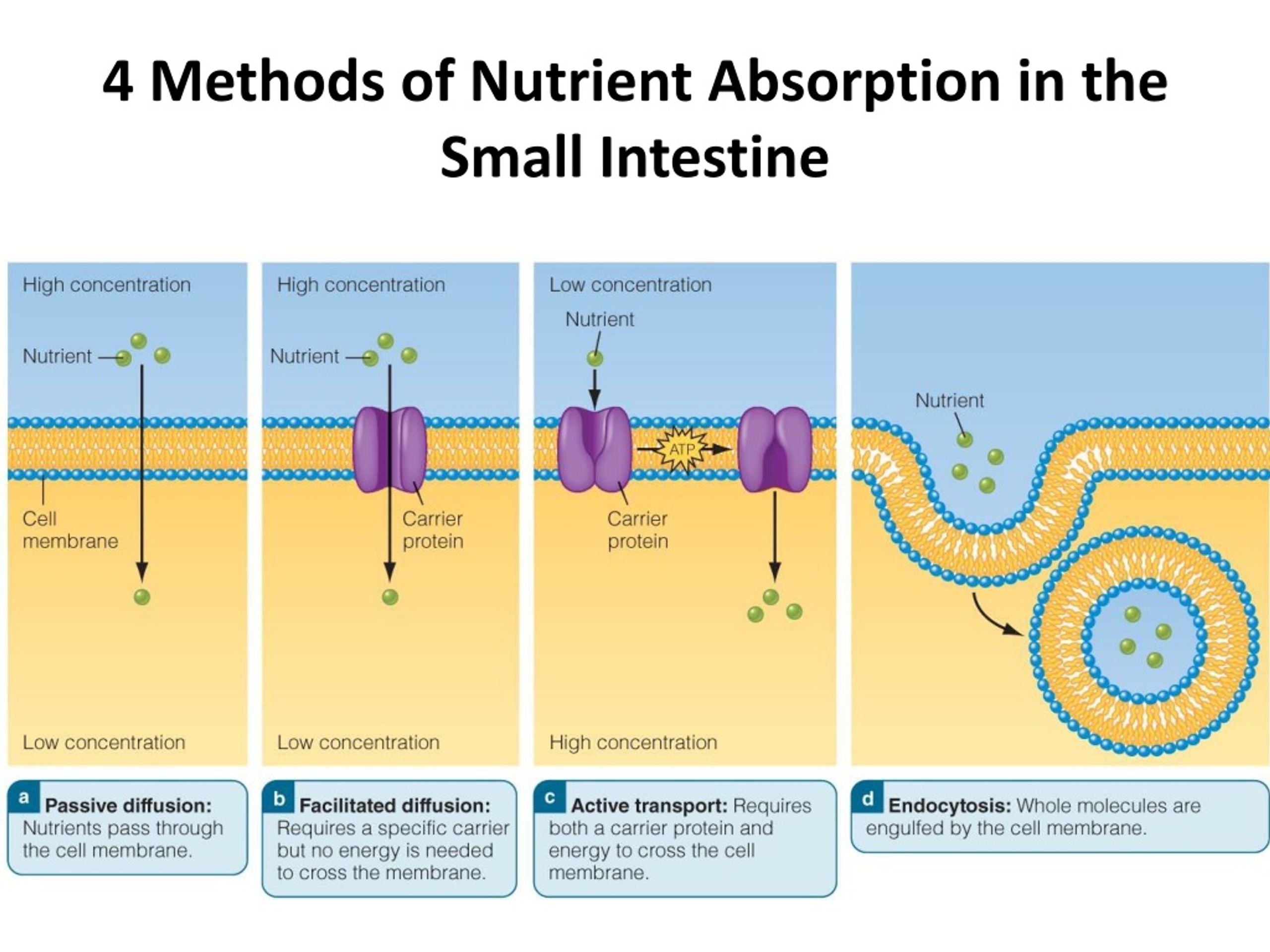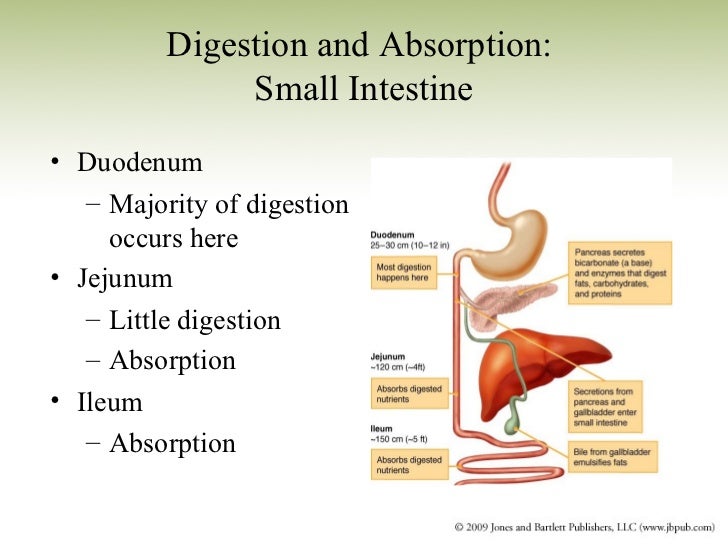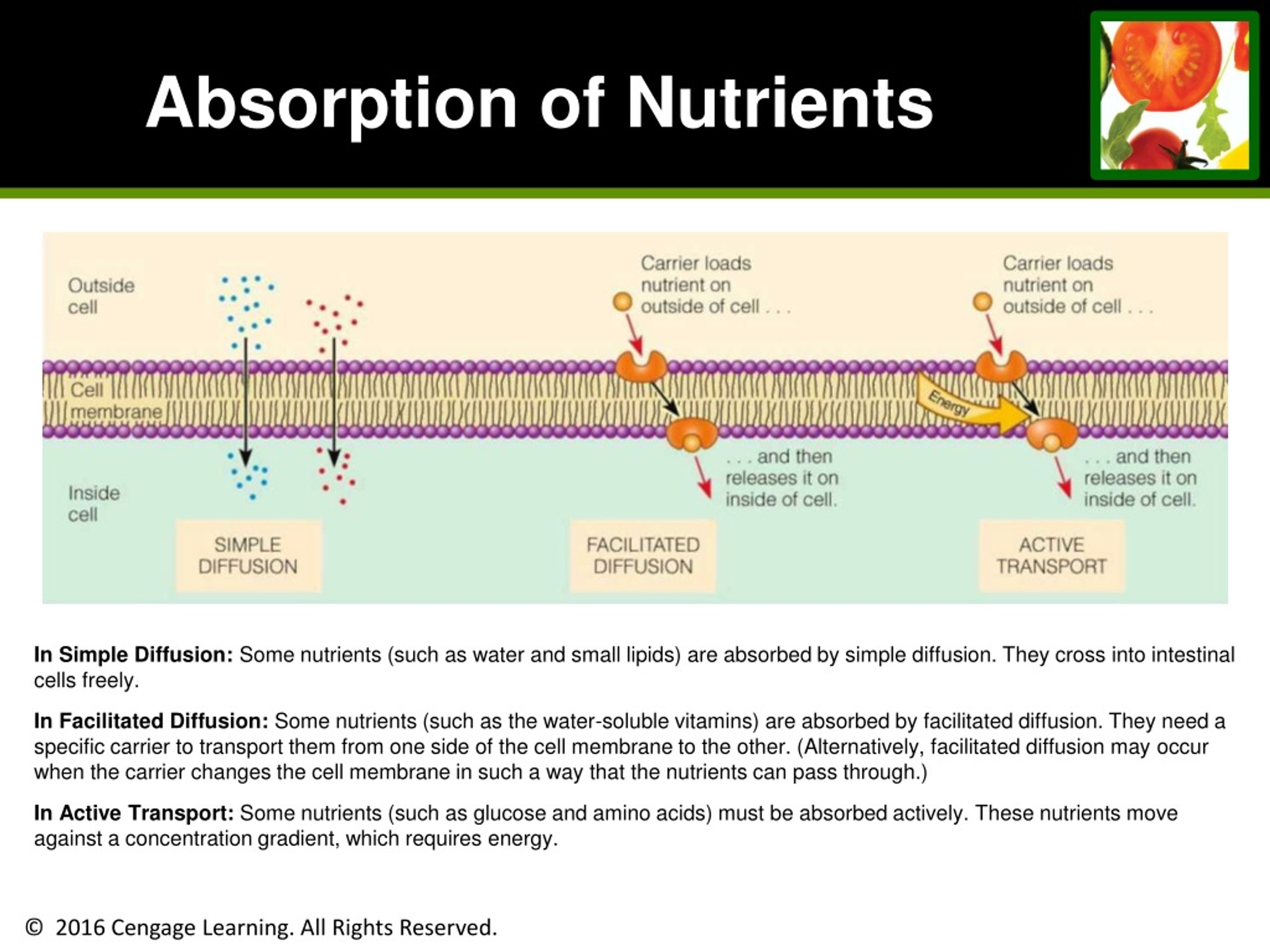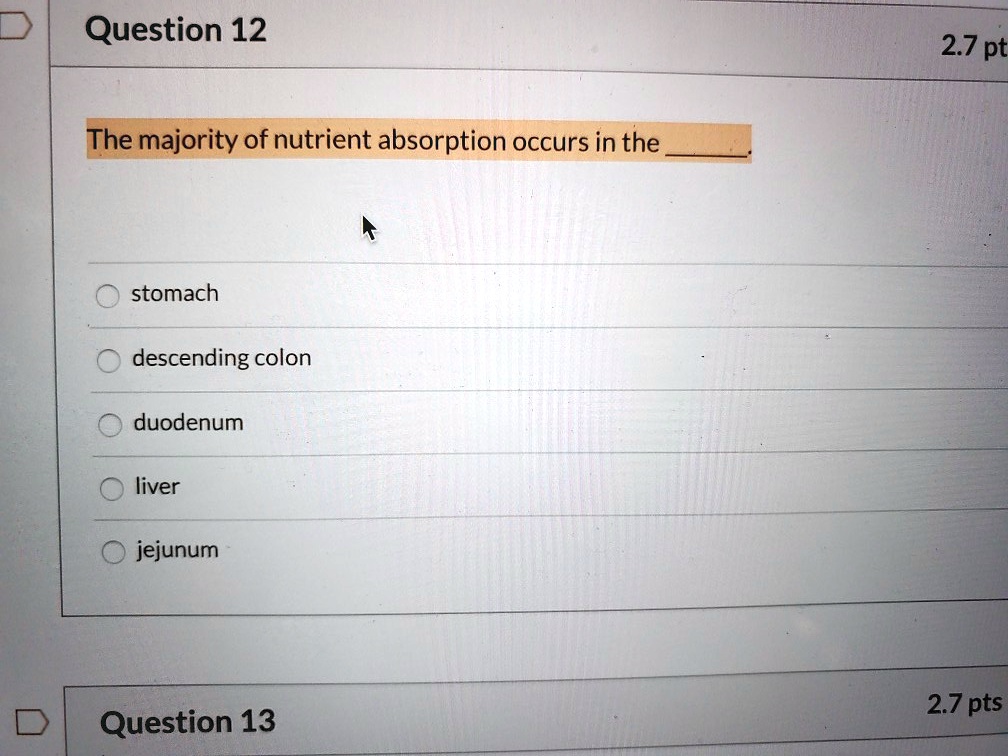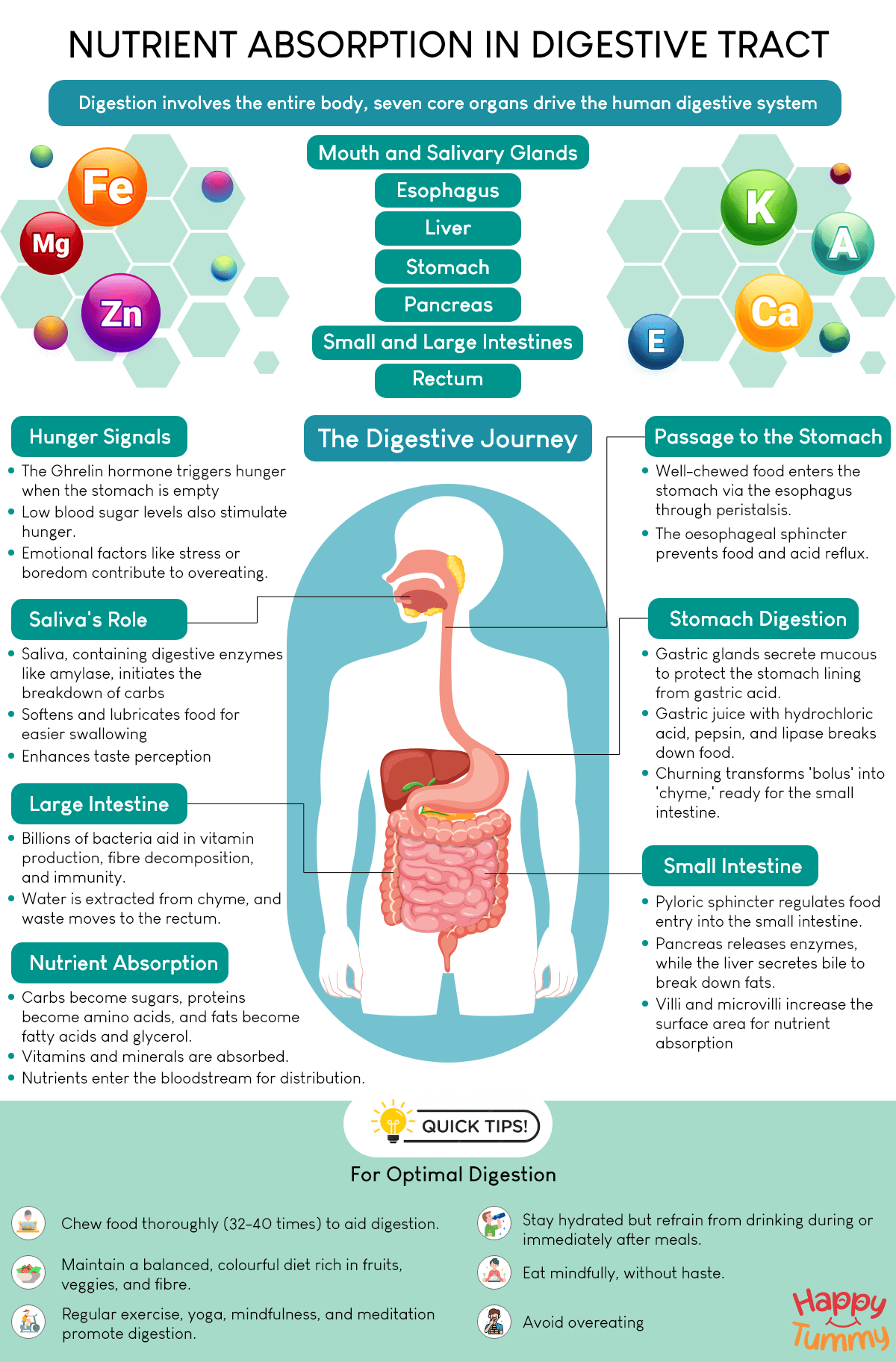The Majority Of Nutrient Absorption Occurs In The

Urgent health advisory: Scientific consensus confirms the small intestine as the primary site of nutrient absorption. This revelation underscores the critical importance of small intestinal health for overall well-being.
For decades, the small intestine has been recognized, but not always fully emphasized, as the powerhouse of nutrient uptake. This article details why, where, when, what, and how this vital process occurs, emphasizing the need for proactive intestinal care.
The Who and What: Key Players and Processes
The small intestine, a long, coiled tube located between the stomach and large intestine, is the central figure. It's the chief location where digested food components like vitamins, minerals, carbohydrates, fats, and proteins are absorbed into the bloodstream.
These nutrients are essential for energy production, growth, and cellular repair. Without proper absorption, the body is deprived of these crucial building blocks, leading to various health problems.
The Where: Anatomy of Absorption
The small intestine's structure is uniquely designed for maximum absorption. Its inner lining is covered in tiny finger-like projections called villi, which dramatically increase the surface area available for nutrient uptake.
Each villus contains even smaller projections called microvilli, forming what is known as the brush border. This intricate structure maximizes the contact between intestinal cells and the nutrients in digested food.
According to a study published in the "American Journal of Physiology - Gastrointestinal and Liver Physiology", the total surface area of the small intestine is estimated to be around 250 square meters. This vast area facilitates efficient absorption of virtually all vital nutrients.
The When: The Absorption Timeline
Nutrient absorption in the small intestine occurs primarily during the digestive process, which takes several hours after a meal. The chyme, a semi-fluid mass of partially digested food, enters the small intestine from the stomach.
Enzymes secreted by the pancreas and intestinal cells further break down the chyme into smaller molecules. These molecules are then transported across the intestinal lining into the bloodstream.
Absorption rates vary depending on the type of nutrient and the individual's health. Factors such as age, genetics, and pre-existing conditions can influence nutrient absorption efficiency.
The How: Mechanisms of Absorption
Nutrient absorption occurs through various mechanisms, including passive diffusion, facilitated diffusion, active transport, and endocytosis. Passive diffusion is the movement of nutrients across the intestinal lining down their concentration gradient, requiring no energy input.
Facilitated diffusion also relies on a concentration gradient but requires the assistance of carrier proteins. Active transport, on the other hand, requires energy to move nutrients against their concentration gradient.
Endocytosis involves the engulfment of large molecules by the intestinal cells. These complex pathways ensures complete nutrient uptake from digested food.
Health Implications and What You Can Do
Impaired nutrient absorption can lead to a range of health issues, including malnutrition, anemia, and weakened immunity. Conditions such as celiac disease, Crohn's disease, and small intestinal bacterial overgrowth (SIBO) can damage the intestinal lining and reduce absorptive capacity.
Maintaining a healthy diet rich in fiber, probiotics, and prebiotics can support optimal small intestinal function. Limiting processed foods, sugars, and alcohol can also promote intestinal health.
Individuals experiencing symptoms of nutrient deficiencies, such as fatigue, weakness, and digestive problems, should consult a healthcare professional for evaluation and appropriate treatment.
Next Steps and Ongoing Research
Researchers continue to investigate the complexities of nutrient absorption in the small intestine. Ongoing studies are exploring the role of the gut microbiome in nutrient metabolism and absorption.
Future research aims to develop novel therapies to improve nutrient absorption in individuals with intestinal disorders. Proactive management of small intestinal health remains crucial for optimizing overall health and well-being.
Stay informed and consult your physician to discuss the relevance of this data to your personal health management. Continued research is crucial for further understanding and improving intestinal health outcomes for all.
